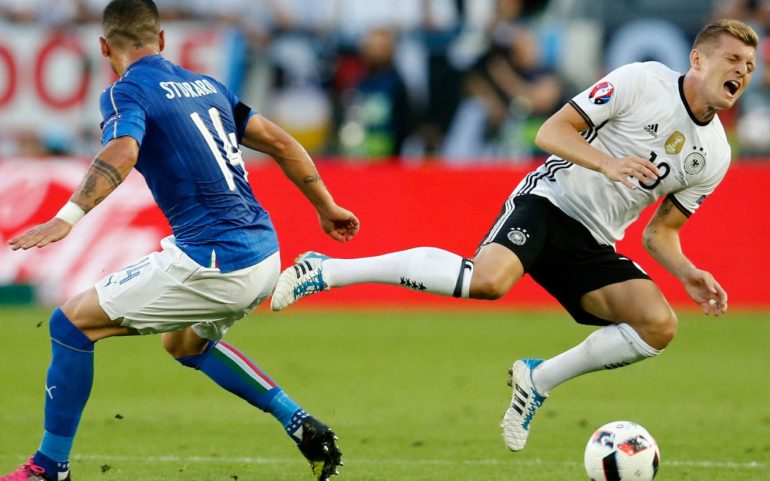The summers are connected on a sports level with the games of the national teams, as there will almost always be a football event for the fans to be involved and to spend… their time creatively in the grass of the season. Other times World Cup, other Euro, other Copa America like this year, the program will have something to pique their interest.
Football fans have always loved the games of the representative teams, even if they hardly occupy a place in their hearts and consciences equal to the clubs. There are, however, those who are more attracted to national competitions and almost all have a team that makes them "click" a little more than the rest, along of course with that of their country.
Those who consciously incorporate the most popular sport into their daily lives will also have an "I support" answer such as Italy, Germany, England, Brazil, Argentina, the Netherlands, France, Spain, Uruguay and so on.… One of the reasons this is the binding, concerns the appearances and the colors of representative groups. Some are attracted by the blue, others by the orange, others by the yellow jersey with the blue shorts, others by the white-blue stripes, others by the plain white jersey with the black shorts…
Each national team has the colors that characterize it and with which it is connected in the consciousness of the fans. However, these do not necessarily have to be associated with the flag of the countries they represent. Typical examples are "giants" of the world football such as Germany, Italy and the Netherlands. But why is this happening? Obviously there is a reason and it was not τύ by chance. The detailed recording follows.
Germany: Black and white and να green
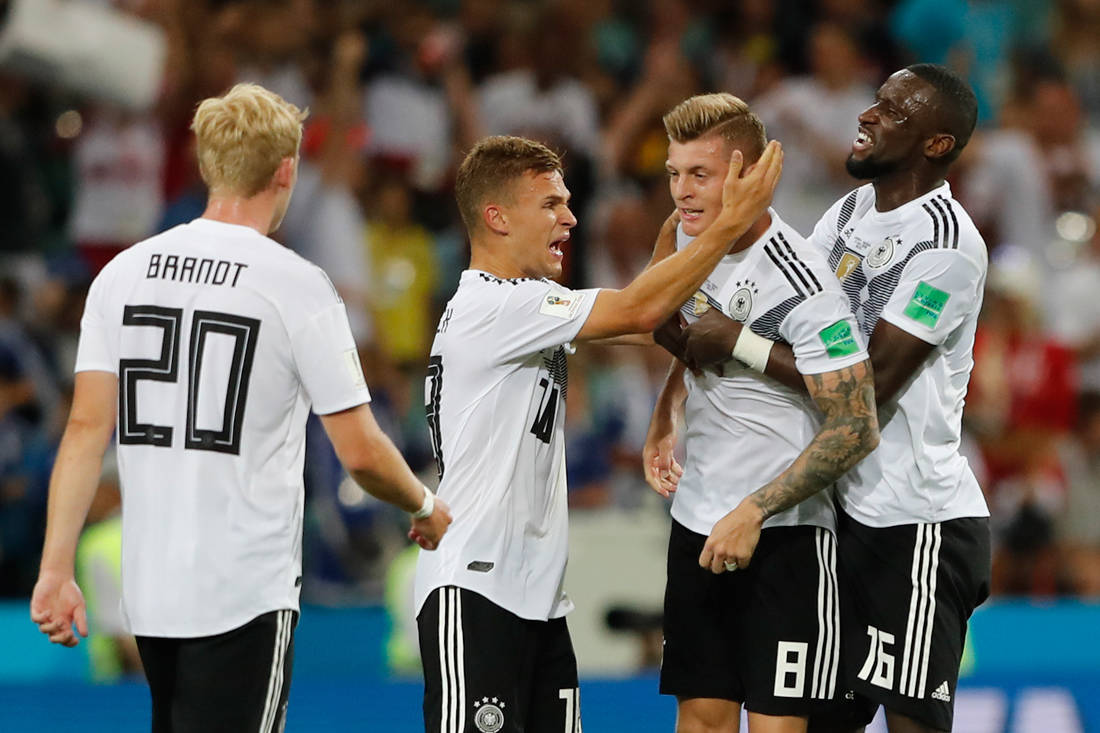
The first appearance of the national team of Germany is a white jersey and socks with black shorts, while the flag of the country consists of black, red and yellow. The colors of the "punchers" reflect the great Prussian tradition. It started with them in 1900 when the Football Federation of the four-time World Cup winner was founded and it continues with them.
Prussia is one of the kingdoms that united to form Germany in 1870. The traditional colors were black and white, by the House of Hohenzollern, who gave the country all the emperors it had.
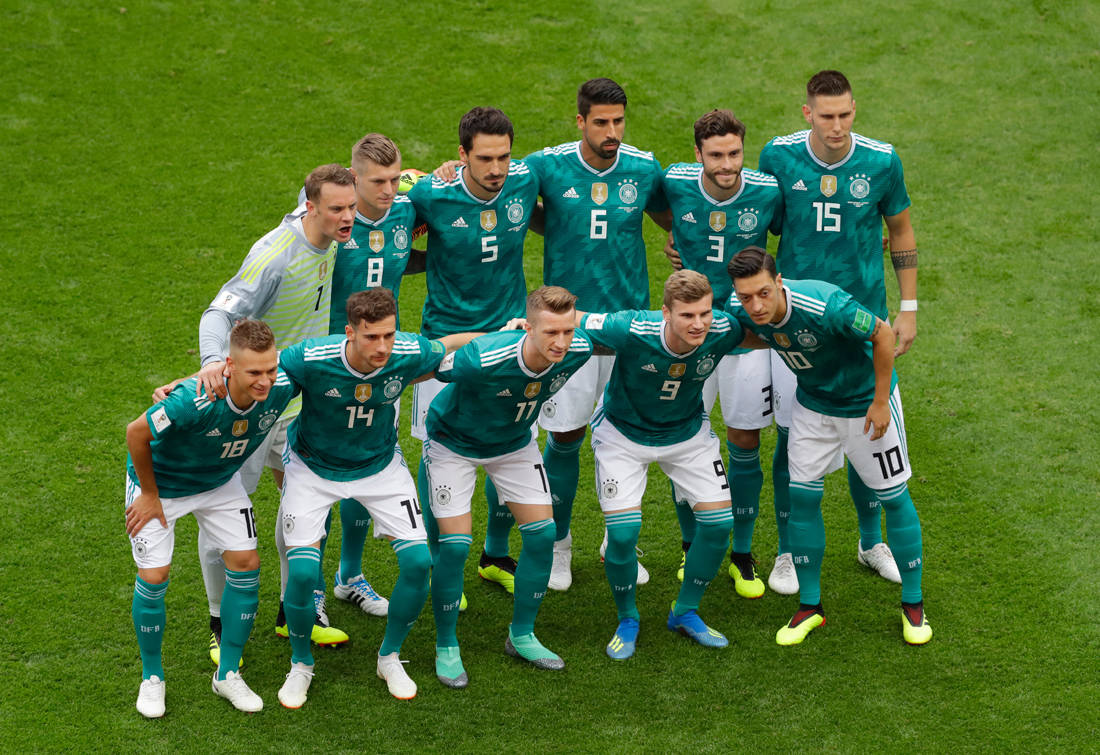
But Germany is no different colors of its flag only in the first appearance, but also in the occasional second. Green should probably be attributed to the colors of Saxony, also a large kingdom in the east of the country, however it is not the only version.
This has to do with the situation after World War II, when no team wanted to play Germany. Ireland broke this embargo in 1950 and since then the green jersey with white shorts has been established as a second appearance.
Italy: The azure of the house of Savoy

The classic colors of the Italian national team are blue jersey and socks, with white shorts. The inverted colors refer to the second appearance, while the tricolors of the flag (green-white-red) have appeared from time to time as details, which "broke" the blue and white. The exact color of the Italian national is called azzurro Savoia (Savoy blue), the color associated with the royal family that united the country into a single state.
Among the kingdoms that united to form Italy in the 1860s was Sardinia (which included parts of present-day northern Italy such as Lombardy and Piedmont) which had a blue flag, with King Vittorio Emanuele II as ruler. throughout the country. With the king being the honorary president of every sports federation, the national teams dressed in blue to honor him. A tradition that did not change in Italy even when there was a differentiation of the regime.
However, the Italian national team at soccer -who also holds four World Cups- first appeared on the field with a white appearance. This happened on May 15, 1910, in its first international game against Germany.
Netherlands: Green in all sports

The Dutch are perhaps the most fanatical supporters of national sports efforts, with stadiums and stadiums turning orange where the country is represented. In fact, the teams in each sport bear the nickname "oranie", which means orange in the Dutch language.
The tradition of this color goes far back, when fights took place only on battlefields. More specifically, in the 16th century, the Netherlands, after 80 years of war, claimed and gained its independence from Spain. The leader of the country at that historical period was William the Silent (Willem de Zwijger), or William the Orange, who is considered a national hero for his compatriots.
The first flag of the Netherlands came from his family coat of arms and was the same as today with the difference that the red stripe was orange. The tricolor remained until 1815 when the Dutch Monarchy was created, but orange passed into the popular tradition of the country, becoming the national color. So, all national teams of the Netherlands, in all sports, use it in their appearances.
Austria: The black and whites of Hapsburg
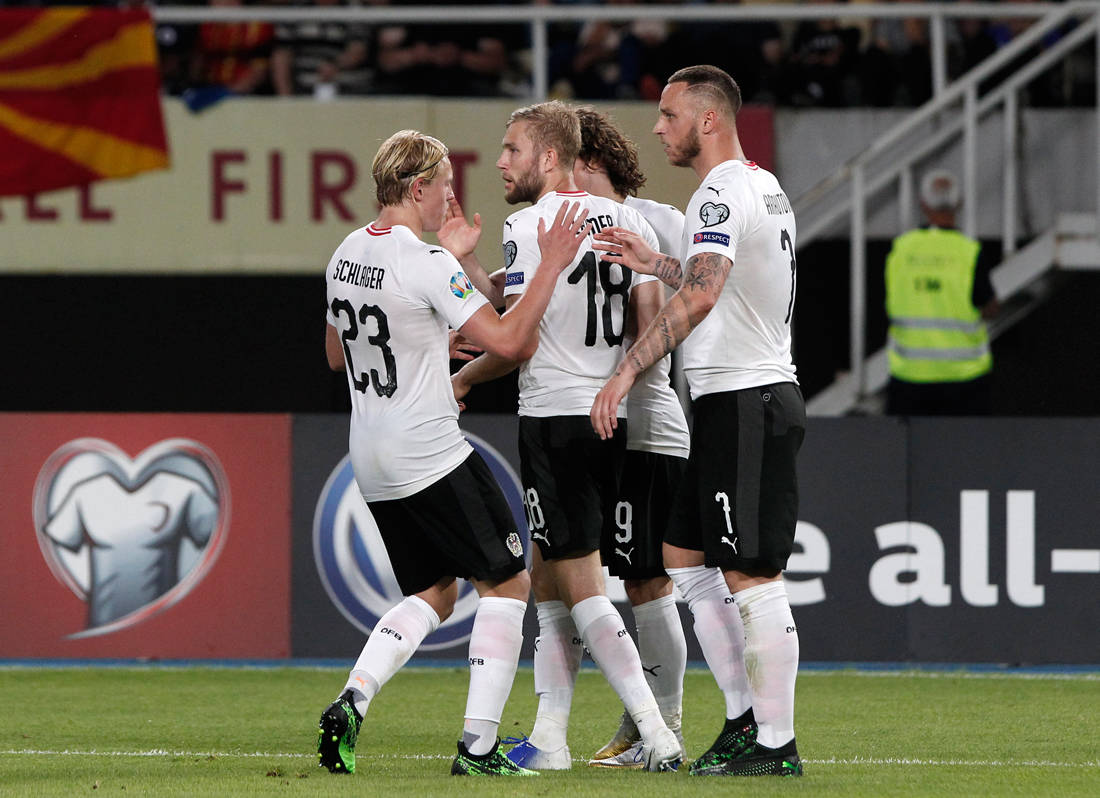
In addition to Germany, neighboring Austria also wears black and white on many occasions. The first appearance of the Central European country in football is a red jersey with white shorts, but also the… but German version is particularly common. These colors are from the province of Upper Austria, when there was the great empire of the Hapsburgs.
Red was and is the official color on the flag of the capital Vienna, from where the current Austrian banner originated.
Slovenia: Green like its mountains
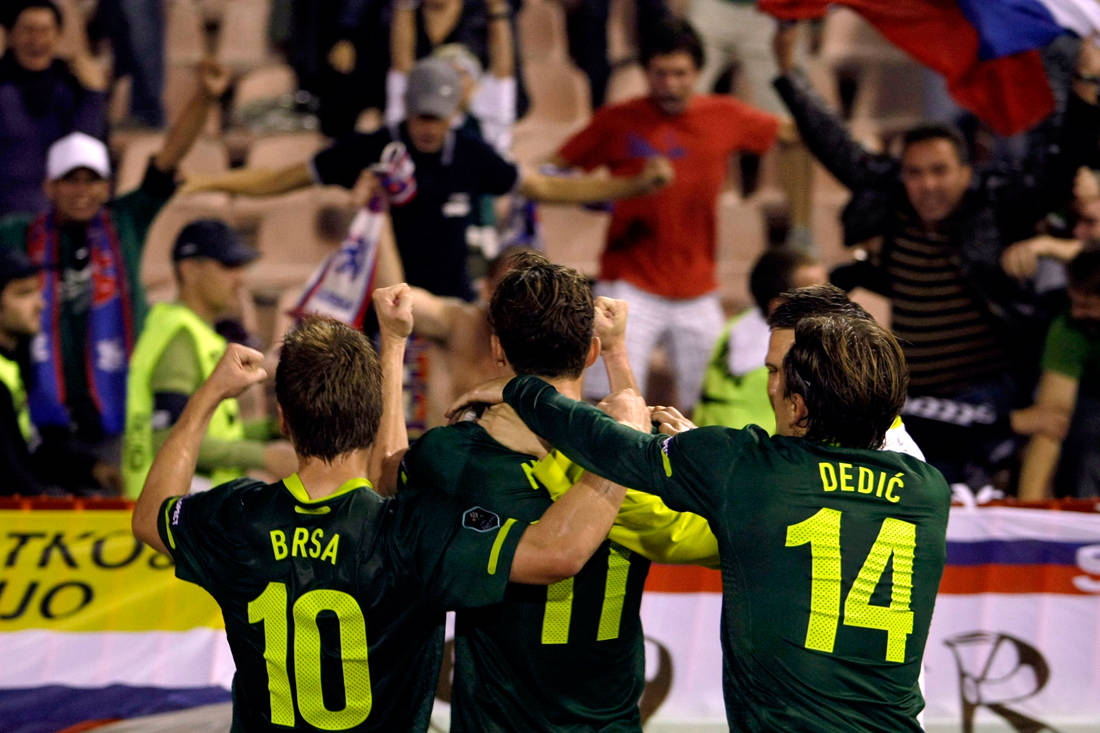
The flag of Slovenia has the traditional colors of the Slavic countries, blue, white and red, which were maintained by Serbia and Croatia after the break-up of Yugoslavia. However, the national teams in sports have chosen for their appearance the green, which symbolizes the vegetation in the country, which is mainly mountainous.
Slovenia in soccer now she has turned it blue, but the green is still in her appearance.
Northern Ireland: Green because… left

The most peculiar case on this list has to do with Northern Ireland. Although administratively it belongs to Great Britain, nevertheless in football it brings down its own national team. Its flag is white, with a red cross in the middle, much like that of England. However, the representative band wears green, like… plain Ireland.
The reason why the colors of the flag did not change has to do with the fact that τέτοια such a move simply never went ahead and that they just stayed. Like the blue in the second appearance, which refers to the color of St. Patrick.
Japan: Blue due to. Ban

The flag of Japan is white with a red circle in the middle. But, the national team of the country of the rising sun plays with blue. And here it has nothing to do with some tradition, but with… prohibition. The color red is used only for the flag and the clothes of the imperial family. For this reason the national teams were forced to wear a different shade.
Blue is an imperial color, but is only used when the emperor travels to sea according to protocol and so this was chosen. As for the second appearance, although it is usually white, but many times they also used all yellow.
Australia: "Kangaroo" in yellow and green
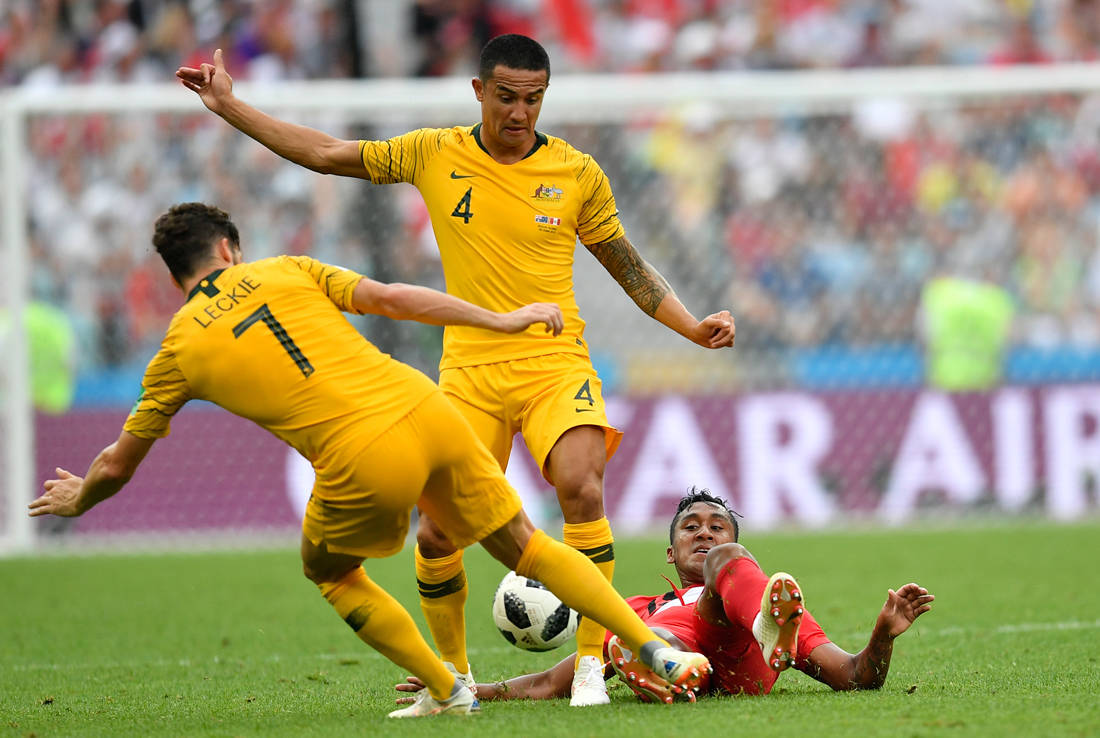
The flag of Australia has the colors of Great Britain, blue, white and red, which symbolizes its ties with Great Britain. However, the national teams of the largest country in Oceania, which football now belongs to the Asian Confederation, are yellow and green.
According to the prevailing opinion, their choice comes from the national flower of Australia, the "golden rod". These national colors of "kangaroos" also symbolize the dense vegetation that exists in much of the country and the gold that it has in its subsoil.
New Zealand: Black like Auckland

The colors The flag and New Zealand, the second largest in Oceania, are also classics reminiscent of the United Kingdom. However, the national teams wear an all-black appearance, while the all-white team is second. This choice has its roots in the colors of Auckland, the country's sports capital.
